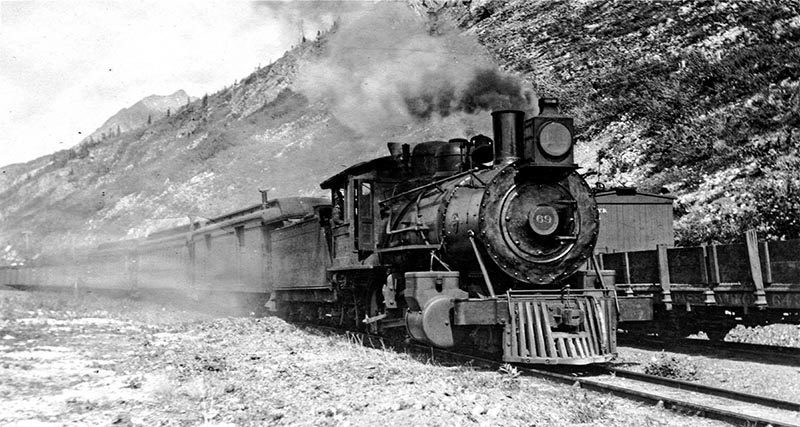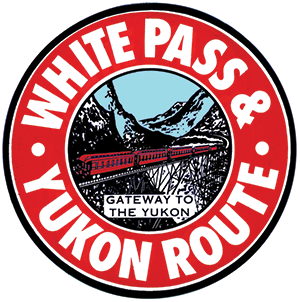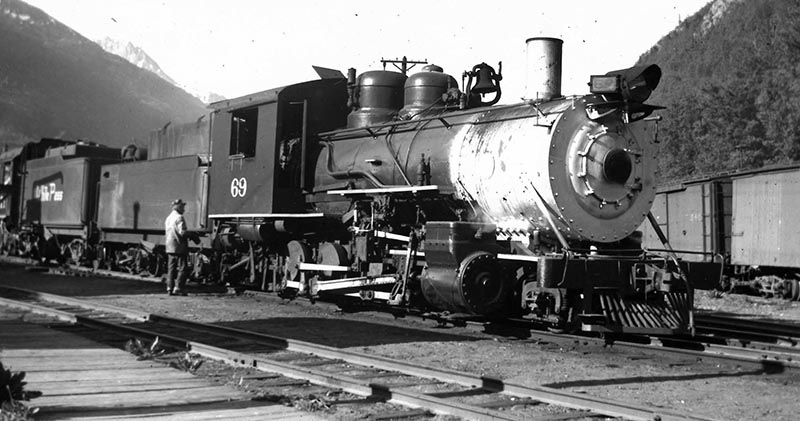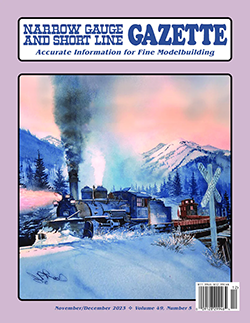In the September/October 2023 issue I examined a truly massive 2-8-0 that the White Pass & Yukon Route ordered from the Baldwin Locomotive Works in 1907. Built to be a helper engine on the steep grades between Bennett, British Columbia, and Skagway, Alaska, WP&YR 68 came to a tragic end in 1917. Long before her untimely demise, the huge No. 68 was such a success that the White Pass management went back to Baldwin and placed an order for a slightly bigger loco-motive in March 1908.
No. 69 was built in April, 1908 as construction no. 32962. She had a 66-inch diameter boiler operating at 160 psi, 42-inch diameter drivers, and 21- x 22-inch cylinders. With a smoke-box superheater and about 124,000 lbs. on her drivers, she produced a phenomenal 31,400 lbs. of tractive effort. Aside from taller drive wheels and bigger cylinders, No. 69 was very similar to her sister, No. 68, except for her valve gear. While No. 68 had Stephenson valve gear, No. 69 was built with Walschaerts valve gear. WP&YR No. 69 was the last new locomo-tive the railroad would buy until 1938—30 years later!

ABOVE: WP&YR 69 has three passenger cars headed south at Bennett, British Columbia (milepost 40.6). The huge locomotive did not operate north of Bennett as the rail between here and Whitehorse, Yukon Territory, was too light for it. —Unknown photographer, courtesy the Skagway Museum Talbot-049
WP&YR 69 used her brute strength to help shove trains up the first twenty steep miles north of Skagway, Alaska. According to the late J.D. True, a long-time engineer on the White Pass, she could handle about 175 tons up the “hill” by herself. Number 69, like #68, never operated north of Bennett, B.C., due to the lighter 45 lb. rail used between Bennett and Whitehorse, Yukon Territory.
 WP&YR No. 69 received a second air pump at some point, and she got electric lights in 1919 along with the rest of the White Pass fleet. A devastating fire consumed the Skagway roundhouse on February, 12, 1932, burning locomotive 69 and three other locomotives. Number 69 was rebuilt and returned to service in August of that same year.
WP&YR No. 69 received a second air pump at some point, and she got electric lights in 1919 along with the rest of the White Pass fleet. A devastating fire consumed the Skagway roundhouse on February, 12, 1932, burning locomotive 69 and three other locomotives. Number 69 was rebuilt and returned to service in August of that same year.
The late J.D. True referred to No. 69 as the “Bull of The Woods.” It was supposedly during World War II that the nickname “The Gila Monster” was given to the engine by the men of the U.S. Army’s 770th Railway Operating Battalion. They operated the WP&YR from October 1, 1942, through April 30, 1946. It has been said that the WP&YR did not use No. 69 during the winters be-cause she was too wide across her cylinders, but the Army sure used the 69 in winter. During World War II and under the U.S. Army’s decree that “trains will be run no matter what,” locomotive 69 saw no respite from the work at hand.

ABOVE: WP&YR 69 at the Skagway shops in 1952 or 1953 sporting a steel cab. The engine was converted to an oil burner in 1951 and got the steel cab in the process. The late J.D. True said that #69 never fired right after the conversion. The locomotive was retired in 1954. —Unknown photographer, Mulvifoto AP35 (Carl Mulvihill), Rob Bell collection.
A brutal snow storm occurred in February 1943 with gale force winds and temperatures hovering around 30 degrees below zero. The south bound rotary fleet (rotary No. 2 and WP&YR locomotives 81 and 62) derailed at the north Fraser Loop switch (approximately mp 27.7) on February 6. White Pass locomotives 66 and 69 were dispatched north bound with rotary No. 1 from Skagway at 2:11PM but were only able to make it to mp 16.5 due to heavy snow and high winds, so they backed down to Glacier (mp 13.8) for the night. The storm got worse on the next day and the south bound rotary fleet was still on the ground. Engines 66 and 69 could not back their rotary down to Skagway because of the snow drifting in behind them.
Locomotive 256, a Denver & Rio Grande K-28 and recent U.S. Army acquisition, was sent to plow out the line north to Glacier so the north bound rotary could return to Skagway. Engine 256 and the north bound rotary fleet returned to Skagway shortly after 3:00PM…




